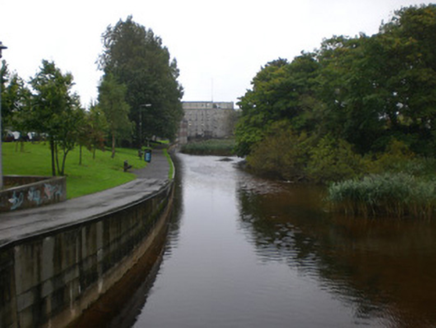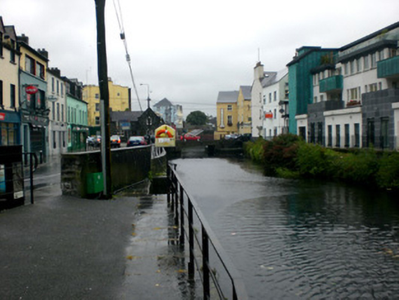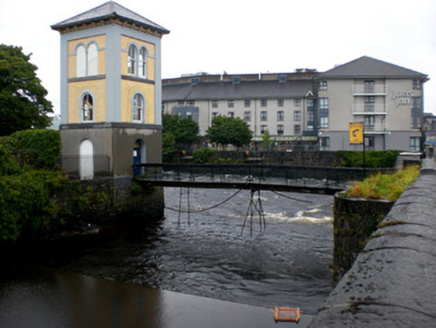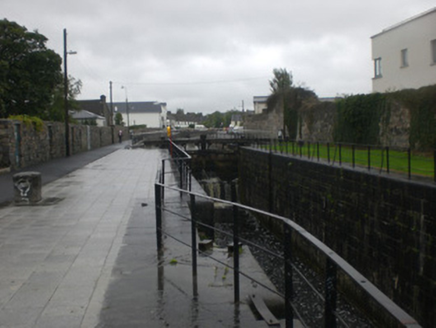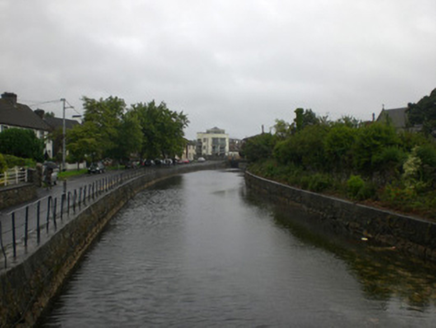Survey Data
Reg No
30313013
Rating
Regional
Categories of Special Interest
Architectural, Technical
Original Use
Canal (section of)
Date
1845 - 1855
Coordinates
129389, 225668
Date Recorded
09/09/2008
Date Updated
--/--/--
Description
Eglington Canal, built c.1850, following curving path south from inflow from River Corrib Upper and passing beneath five bridges which have made watercourse non-navigable. Canal begins to north of Salmon Weir on west bank of Corrib River (upper) where small harbour is located. Canal then proceeds to move south-west with limestone block-lined banks having limestone block coping stones and narrow tarmac footpath to west bank before splitting into two separate waterways with main canal continuing to south-west and shorter but equally substantial branch proceeding south beneath road bridge and recent pedestrian bridge where branch would have serviced small group of mills which are built surrounding small harbour at end of branch. Main canal continues south-west before curving back around to continue south-east after passing beneath two recent concrete construction road bridges with concrete and steel rail parapets. Canal at these points narrowed by addition of limestone block-lined piers which reduce spans of each bridge by two metres eliminating need for more complex structures. Between these two bridges is second branch which follows south-easterly route before re-entering canal south of lock basin via stone-lined channel. Lock basin comprised of limestone block lining with limestone coping blocks, timber lock gates and box, sluice racks having recent cast-iron safety railings to banks. One set of gates removed with flow of canal now regulated by remaining gate and sluice racks to north of lock basin. Canal then continues to south-east before splitting again with south-east branch passing under William O'Brien Bridge and into Claddagh Quay and second branch travelling roughly north-east before re-entering River Corrib (lower) after passing over stone-lined weir.
Appraisal
This finely designed and expertly built canal was once an essential trade route allowing goods and passengers easy access to the navigable section of the River Corrib and also provided power to several mills. The presence of the canal no doubt encouraged the expansion of trade and industry in the locality and is of significant industrial heritage value as well as amenity value.
